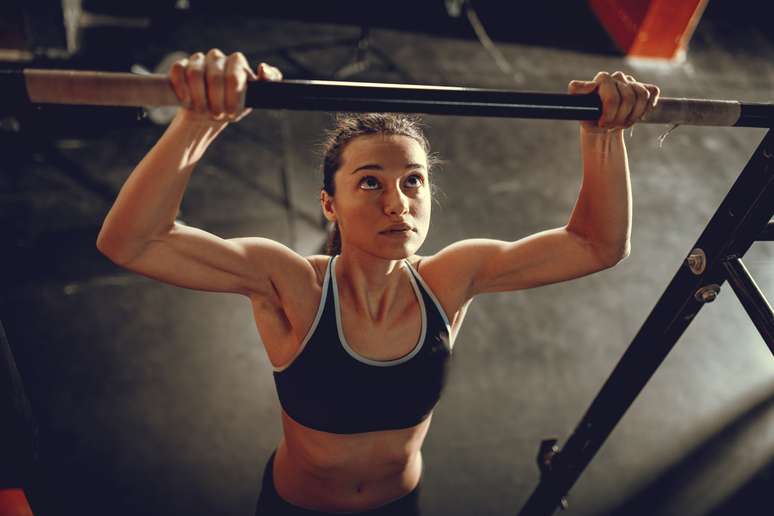While great for building back muscles, this exercise is challenging to perform.
The chin-up is one of the most recommended exercises to strengthen the back and arm muscles. This is because this multi-joint movement involves several muscle groups at the same time during its execution.
However, many people have difficulty performing pull-ups, especially beginners, since it is an exercise where you need to place your body weight against gravity, supporting controlled movements.
If you are one of those people who have difficulty doing pull-ups, know that with the right approach and a little patience, you can master this exercise and reap the benefits. We will show you how to get there!
Why is weight lifting so important?
The chin-up is an exercise that works several muscles in the body, the main ones being the latissimus dorsi (back), biceps, trapezius, rear deltoids and even the abdomen. Since it is a movement that involves lifting your own body weight, it develops functional strength, muscular endurance and coordination.
“The exercises for the back and biceps are those that involve tractions. Therefore, if you want to train rhythmic gymnastics (with your body weight), it is not necessary to do isolated exercises for these muscles, since fixed bar enough, as well as its variations”, says Júnior Britto, physical education, artistic gymnastics and functional training teacher.
There are several variations of grip on the pull-up bar, which change the focus of the exercise:
- Prone grip: with palms facing forward. Focus more on your back muscles
- Supine grip: with your palms facing you. It works your biceps and back muscles more
- Neutral grip: with the palms of the hands facing each other. It is a middle way between the two previous ones, balancing the work of the muscles
Now that you know what a chin-up is and its benefits, let’s see how you can perform more movements in this exercise!
7 Tips to Develop Your Chin-Up
If you have difficulty performing a pull-up, follow these steps to gradually progress:
- Strengthen your grip: Start by strengthening your grip, as a strong grip is essential for pull-ups. Exercises like a strong grip and forearm exercises are also great for this purpose.
- Increase strength with auxiliary exercises: Machine or weight-based exercises in the gym, such as rows, pull-ups, and the use of resistance bands that relieve some of your body weight during the movement, can help build strength in your back and biceps.
- Train Isometry: Isometrics, or holding yourself at the top of the pull-up bar for as long as possible, effectively strengthens your muscles. This helps you develop the strength needed to perform the full movement.
- Do fewer reps and more sets: Choosing to do fewer reps per set, but increasing the number of reps, can help you gradually build strength. This also reduces the risk of injury.
- Train the descent: focus on the lowering phase of the movement. Jump or use a box to help you reach the bar and slowly lower yourself. This helps strengthen the muscles that will be used for the ascent.
- Use rubber bands: If you are just starting out or have difficulty performing a full pull-up, resistance bands can provide gradual assistance, allowing you to gain strength progressively.
- Consistency is key: Practice regularly and gradually increase the number of repetitions. Over time you will see improvements
Learning to do pull-ups can be challenging, but it is a great way to improve your strength and endurance. Remember that everyone is different at different paces and the most important thing is to persist and adapt the workout to your abilities. If in doubt, seek out a physical education professional.
Source: Terra
Ben Stock is a lifestyle journalist and author at Gossipify. He writes about topics such as health, wellness, travel, food and home decor. He provides practical advice and inspiration to improve well-being, keeps readers up to date with latest lifestyle news and trends, known for his engaging writing style, in-depth analysis and unique perspectives.








